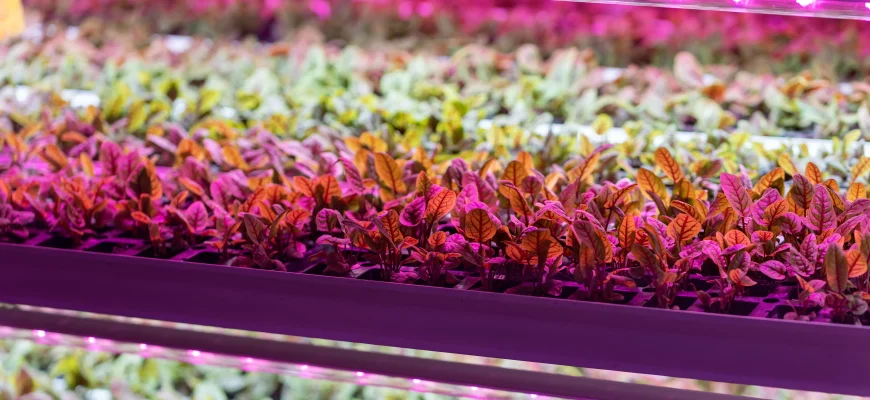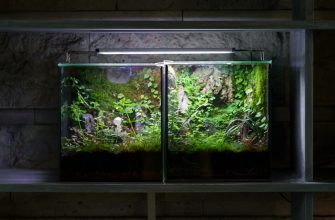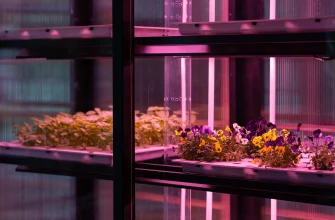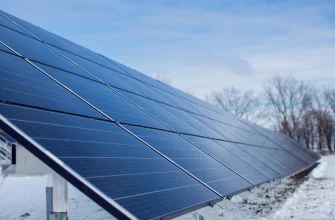The problem of insufficient lighting
When growing indoor plants at home, the problem of insufficient lighting often arises, especially in winter, when daylight hours are short. Both indoor flowers and seedlings, which begin to be grown in late February or March, suffer from a lack of light. Conventional lamps for supplementary lighting can be harmful: plants get heat burns, suffer from water shortages, and phytosynthesis remains abnormal.
However, not everything is as bad as it seems. There is an effective engineering solution that helps to solve this problem – the use of special LED lighting for plants. LED phytolamps for plants are now available in a wide range, they are economical, reliable and easy to use. Unlike conventional lamps, phytolamps do not overheat plants, providing them with the light they need without the risk of heat burns. In addition, they generate a spectrum of light that best suits the needs of plants for photosynthesis, making them much more efficient in maintaining healthy growth and development.
What is a phytolamp for plants and how does it work?
LED phytolamps for plants do not differ in design from conventional LED lighting devices – emitting crystals generate a light flux of a certain wavelength under the influence of an electric current. The main difference lies in the composition of the spectrum – not a narrow interval of warm white glow, as in incandescent lamps, but a wide range from ultraviolet to red rays. It is this spectrum that is the main advantage of LED phytolamps for plants, as LEDs emit the light necessary for plant growth and development.
Basic glow colors
The main glow colors are listed in order of increasing wavelength:
- Ultraviolet (up to 380 nm ) – delays the elongation of plants, promoting the formation of strong, healthy seedlings.
- Violet-blue (380-490 nm ) – stimulates the processes of photosynthesis, affects the growth rate and development of young plants.
- Red (620-700 nm ) – promotes plant vegetation, the formation of flower and fruit bodies, as well as an overall increase in yield.
For the consumer, it is important that LED phytolights can be easily connected to LED control systems and use a timer. This allows you to adjust the brightness level and the schedule of switching the lamp on/off according to the needs of the plants.
Recommendations for using phytolamps
To maximize the effectiveness of phytolighting, LED phytolamps should be installed at a certain height from the illuminated surface:
- After planting seeds and immediately after emergence – 12-15 cm. Check the installation height regularly to ensure that the plants do not receive excessive light or heat burns.
- As the seedlings grow, the lamp is raised, maintaining a distance of up to 25 cm from the tops or leaf plates. Make sure that the distance remains optimal to avoid damaging the plants.
Plants also need a dormant period, so it is not advisable to keep the grow light on all the time. The duration of the illumination depends on the crop being grown and its stage of development:
- Before emergence, it is recommended to keep the phytolamp on around the clock.
- In the early stages of seedling development, from 15-16 hours, gradually reducing the insolation time to 12 hours.
- Foradult plants, turn on the phytolight for 10-12 hours.
If you have plants in your “flower garden” that “fall asleep” for the winter, then the phytolamps are turned on for 10 hours every day, despite the dormant period.
What are the different types of LED lamps for growing plants?
There is a wide variety of LED lighting devices for plants on the market. To simplify the choice of LED phytolights, you need to familiarize yourself with the basic principles of classification:
Types of phytolights
- Type of phytolight. There are separate LED panels, strips, phytolamps of various designs. There are also ready-made turnkey lighting systems with control devices.
Characteristics of phytolamps
- Radiation spectrum (wavelength, nm). There are full-spectrum phytolamps that generate rays from ultraviolet to red and infrared. Simpler models have red and blue LEDs in different ratios.
- Power (W). The power of the phytolamp affects the brightness of the glow.
- Driver (voltage, V). There are phytolamps for direct connection to a 220 V network and low-voltage phytolamps that require a power supply with a step-down transformer.
All these technical characteristics are indicated in the factory marking, which allows you to choose the right LED phytolamp.
Examples of phytolamps
LED phytolamps are presented in a wide range in the Led Store catalog. There is a suitable option not only for growing early seedlings, but also for large-scale projects such as full-cycle greenhouses. Site visitors can use a filter to select, for example, “phytolamps for seedlings” or “phytolamps for orchids”. There are also LED phytolamps with different characteristics from global brands and domestic manufacturers on sale.
- Feron LB-708 8W E27 phytolamp is suitable for illuminating a small green corner. It can be screwed into a regular socket or you can purchase a wire with an E27 socket and a switch for phytolamps.
- LEDum 9W T8 600 mm full spectrum phytolamp – ideal for illuminating seedlings. Metal lamp for LED lamp T8 G13 0.6 m.
- Full spectrum LEDum 30W E27 phytolamp – suitable for illuminating a grow box or small greenhouse. Can generate a spectrum in the infrared region up to 1200 K.
- Full spectrum plant lamp 18W 2835 1200 mm PROFESSIONAL class – a universal option, operates on AC voltage 85 ~ 265 V, generates rays of the entire visible spectrum (from 380 to 780 nm).
LED phytolamps help to provide optimal conditions for plant growth, increasing their resistance, health and yield. Using the right lighting is an important step in getting a good harvest or healthy indoor plants no matter the season.








